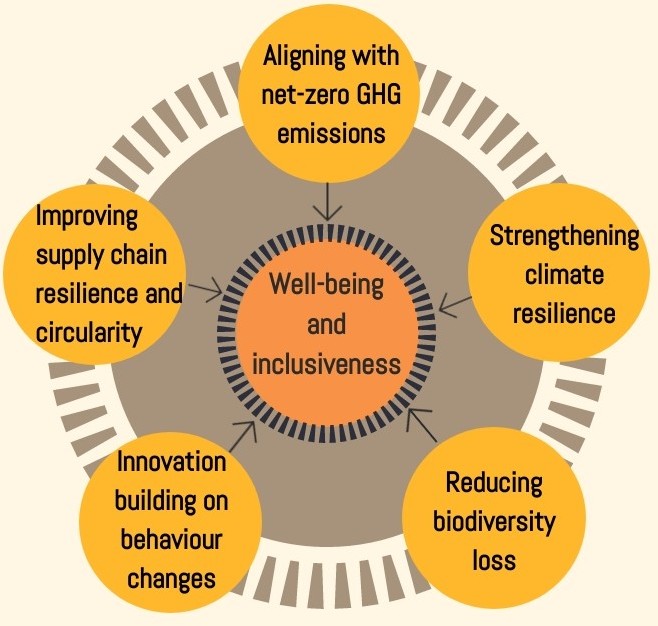An age-old proverb exists that “it’s no use crying over spilled milk” but does this hold true for the catastrophic consequences of Pakistan’s current flood disasters? The recent floods in Pakistan have caused one of the worst humanitarian crises in the last decade with total estimated damage of approximately $20 billion. More than 33 million people have been displaced, one-seventh have lost their homes and the mortality count is over 1300. Unfortunately, this is not the first or possibly the last climate change-related disaster faced by Pakistan. Disasters and their aftermath are not the case of spilled milk, rather climate-related adverse effects are becoming a recurring threat to the survival of many developing countries all over the world. According to research, the increasing frequency of extreme weather events and rising sea levels, without adaptation, will cause up to 4.6 percent of the global population to be flooded annually by 2100.
Countries like Pakistan need climate and disaster resilience financing to manage the recovery and rehabilitation phase of this massive flood disaster and to minimize the potential damages that may arise from such climate change-related disasters in the future. The State Bank of Pakistan and the banking industry can play an important role in this regard by adopting the banking ideology of Green Banking. The State Bank of Pakistan (SBP) may launch various low-interest green financing schemes for the rehabilitation and rebuilding of the infrastructure destroyed during the current floods. Banks in Pakistan may acquire Green Climate Fund accreditation which is targeted toward financing the efforts of developing countries in responding to the challenge of climate change. This is the time for various Development Financial Institutions (DFIs) to step forward and finance the flood resilience and rehabilitation efforts in Pakistan.
Rehabilitation financing is a form of reactive green financing strategy whereas climate and disaster resilience is a proactive green financing strategy that aims to mitigate the climate change-related risks before their occurrence through financing green projects such as dams, dikes, canal-dredging, new pumping stations, and the resettlement of slums which block waterways. Globally, the estimated cost of adapting to climate change is projected to rise to over $100 billion per year which cannot be met without climate-resilient financing products. Both the public and private sectors often face challenges in accessing capital and financing for climate resilience projects. Different bonds bring promising potential to the troublesome gaps in financing for climate resilience and rehabilitation or development projects. They have been used to finance infrastructure projects around the world for many decades. Still, they are largely underexplored to bring diverse sources of capital into climate and disaster resilience and rehabilitation projects. Various types of bonds can be relevant to increasing climate resilience including green bonds, blue bonds, sustainable bonds, social bonds, catastrophe bonds, impact bonds and resilience bonds.
The Government of Pakistan is already struggling due to a lack of capital for the urgently required rehabilitation initiatives and repairs in infrastructure, while simultaneously an expected increase in natural disasters and environmental stresses brings into focus a rising cost of maintaining climate-resilient facilities and infrastructure. The development of eco-tourism projects in the northern areas could have avoided the flood damage intensity. The construction of environmentally unsustainable infrastructures like hotels near rivers also played a role in the massive destruction. Climate resilient financing may also be targeted toward the green financing of eco-tourism projects in Pakistan.
Flooding disasters are also a great threat to food security due to their adverse impact on the food system and directly linked to the rising food inflation in Pakistan. Rehabilitation and resilience financing schemes should be launched for the development of sustainable agriculture products, processes, and infrastructure in Pakistan. The challenges of climate change and natural resource degradation in Pakistan can only be overcome through a synergistic blend of public-private green initiatives.
Green Banking can play a pivotal role in this regard. but only if it is truly embraced and embedded in the core of Pakistan’s banking ideology and not just used as a greenwashing or green image-building slogans. Even after give years, the SBP has yet to mandate any part of Green Banking in the daily banking operations.
All around the world, the banking industry is one of the driving forces behind the country’s sustainable development. Countries like Bangladesh have made Green Banking mandatory and all scheduled banks of Bangladesh are required to allocate at least two percent of their financing towards green finance and 15 percent towards sustainable finance. Pakistan cannot move forward in the adoption of Green Banking without the formation of a dedicated Green Banking Department/Division and staff in banks and cannot achieve the targets of UN-SDGs-2030.
If the world is to meet the climate challenge, biodiversity, and land degradation targets, it needs to close a $4.1 trillion green financing gap by the year 2050. The current global investment in green projects amounts to $133 billion. According to research, every dollar invested in flood resilience saves up to four dollars in future losses.
Many resilience initiatives are not necessarily additional expenditures. Most resilience strategies are combined with existing operations or already needed greening of facilities, project planning documents and business management decisions. Conversion of various public and private structure projects like CPEC into green or eco-friendly projects can automatically embed the element of climate resilience into these projects.
By 2030, climate change adaptation costs are expected to range between $140 billion and $300 billion annually and rise to between $280 billion and $500 billion per year by 2050. For more severe scenarios of global warming, these figures are expected to be much greater. The longer climate resilience and adaptation and risk reduction efforts are put off by chronic underfunding, the more difficult and expensive it will be to manage adaptation needs and the harder it will be to save lives and mitigate future suffering.























